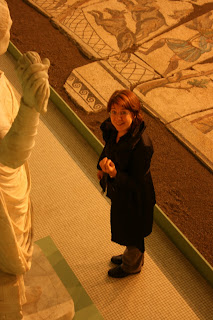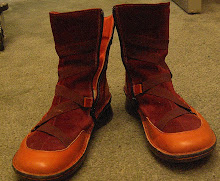Women as Diagrammed Sentences
Diagrammed sentences provide a way of picturing the structure of a sentence. By placing the various parts of a sentence in relation to the basic subject-verb relationship, we can see how the parts fittogether. Diagrammed sentences reveal more than syntax; they also reveal the agency given and denied subjects and objects. In my current art work I am using the structure of a diagramed sentence to visualize and challenge the traditional placement of women in language and art with respect to the subject, the verb and the predicate. In art and in language, women are often placed as the object, or the thing upon which the subject acts by way of the verb. By diagramming the placement of women using the language of art, I wish to suggest a new language in which women become their own subject instead of the object.
Women as the subject, implies that she can create, act upon, define her world as she sees it not as an object that is merely the receptacle for the subject to act upon. In the following pieces, she is not static and one dimensional, instead there are layers, upon layers of self; she is the doer, defining herself.
The subject chooses the object of a sentence as an object of consumption or desire; the object is passive. In object as the woman, she is camouflaged as a bathroom fixture, it is silent, it lies, and it deceives as women have always been reputed to do. The object is a masquerade; it masquerades as femininity.
A woman as the Predicate of a sentence implies that she modifies the subject, object and verb. I chose creatures that are in the process of evolving. The Predicate makes, proclaims, asserts and declares. She is fully engaged in life.
The following pieces are grouped as Subjects, Objects and Predicates and demonstrate both the current female place in language and the opportunities for expression available when art challenges syntax.









































